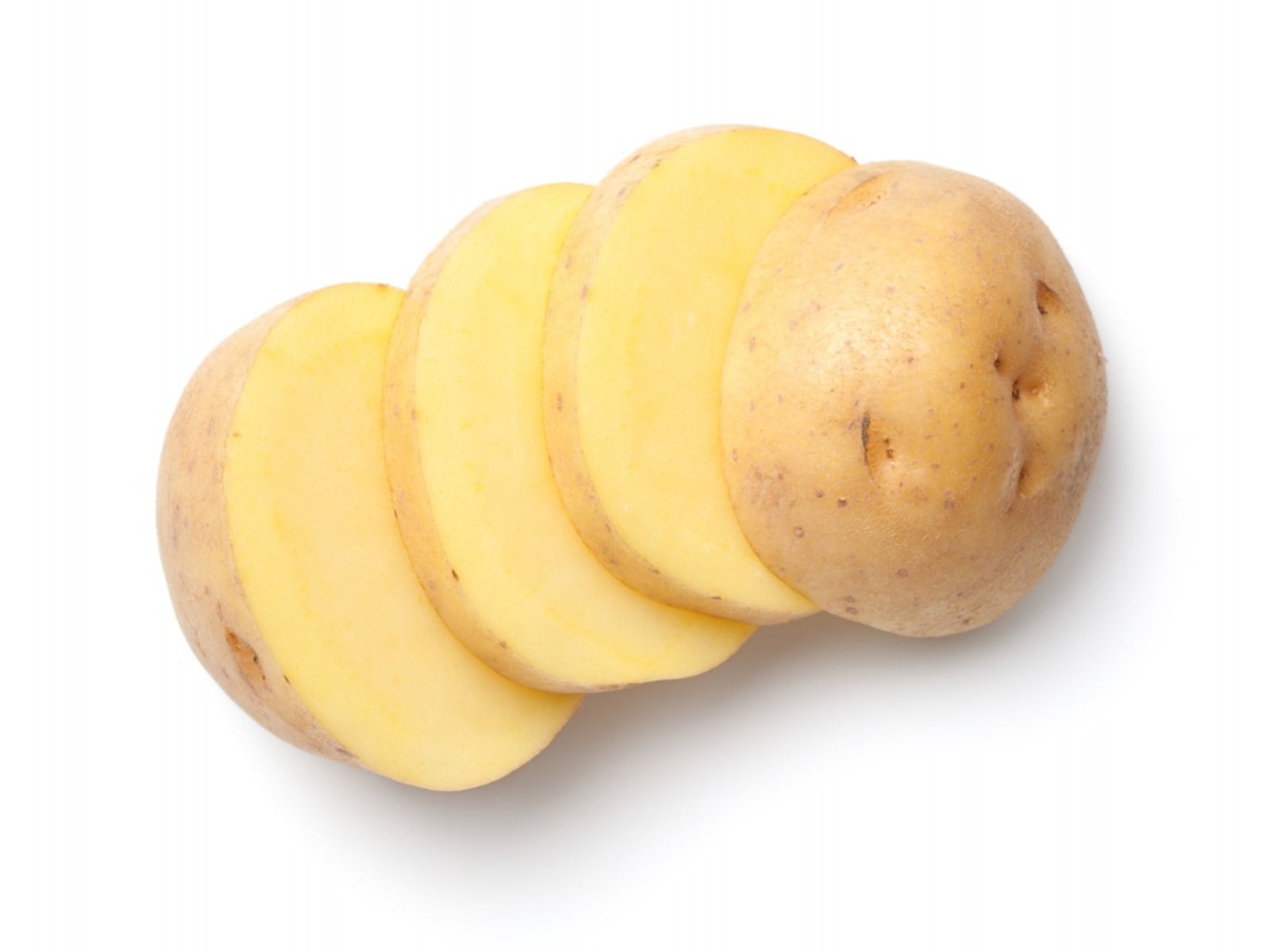Golden Potato Plant Types: Tips For Growing Yellow Potatoes


Potatoes come in a medley of colors and sizes. With hundreds of varieties from which to choose, it seems everyone has a favorite. Red skinned potatoes are known for their creamy texture and appetizing color, while white potatoes have long been the standard for baking. Potatoes that are yellow inside have a sweet buttery flavor. Yellow potato varieties are a favorite for mashing, roasting, and potato salad.
Growing Yellow Potatoes
Like other varieties, golden potato plant types are easy to grow. It's best to start with certified potato seed so as not to introduce disease into the garden. Although potatoes do form true seeds from flowers, these seeds are too genetically diverse to produce true-to-type crops. The term “potato seed” generally refers to tubers containing eyes or buds.
Before planting potatoes, cut the intact tuber into sections with each piece containing at least two eyes. Allow these pieces to dry overnight before planting. In most areas, potatoes are planted three to four inches (8-10 cm.) deep. In drier gardens, potatoes can be planted to a depth of five inches (13 cm.). Space the seed potatoes 9 to 12 inches (23-30 cm.) apart. Wider spacing allows for larger sized potatoes.
The rows of potatoes can be mulched with straw or grass clippings or left bare until the plants emerge. If the latter method is used, the plants can be hilled by mounding loose soil two to three inches (5-8 cm.) around the stem of the plant. Like mulching, hilling potatoes minimizes greening, controls weeds, and raises soil temperatures.
Season long care for gold potatoes is straightforward. Controlling weeds and providing supplemental water as needed are the major concerns. Once the potatoes begin blooming, small “new” potatoes can be harvested near the surface of the soil. Gently dig around the base of the plant to recover these tasty spuds.
In late summer when the plant foliage begins to yellow, potatoes can be harvested as needed. The remainder can stay in the ground as long as soil conditions remain dry and the ambient temperature stays above freezing. It's advisable not to wait too long as it's harder to locate the tubers once the plants have died back completely. Harvest potatoes by carefully digging the area with a shovel or pitchfork.
To prolong the shelf life of yellow potato varieties, cure the freshly harvested spuds for two weeks. Choose a cool, humid location where sunlight or rain can't reach the potatoes. A wire shelf in the garage, basement or under a covered porch works well. Curing allows minor cuts and blemishes to heal and the potato's skin to thicken. After curing, potatoes can be stored in a dark, cool area.
Sign up for the Gardening Know How newsletter today and receive a free copy of our e-book "How to Grow Delicious Tomatoes".
Yellow Potato Varieties
Growing yellow potatoes is an easy task. To find the yellow potato varieties which are right for you, check out these popular choices:
- Agria
- Carola
- Delta Gold
- Inca Gold
- Keuka
- Michigold
- Saginaw Gold
- Yukon Gold

Laura Miller has been gardening all her life. Holding a degree in Biology, Nutrition, and Agriculture, Laura's area of expertise is vegetables, herbs, and all things edible. She lives in Ohio.